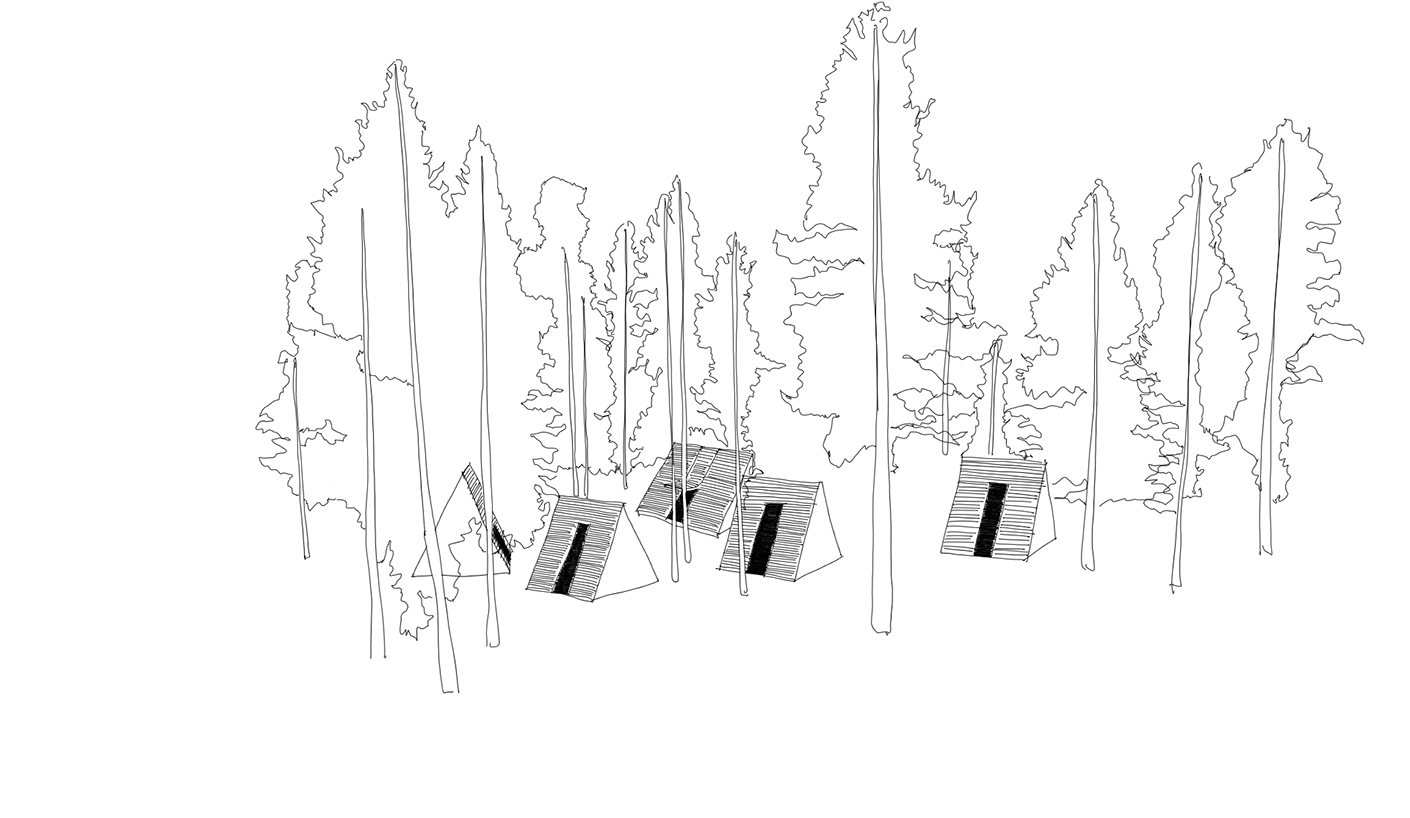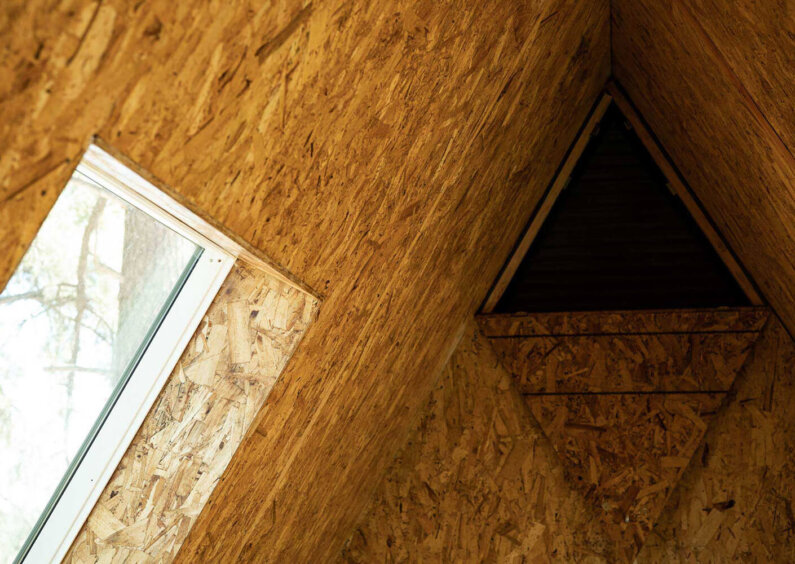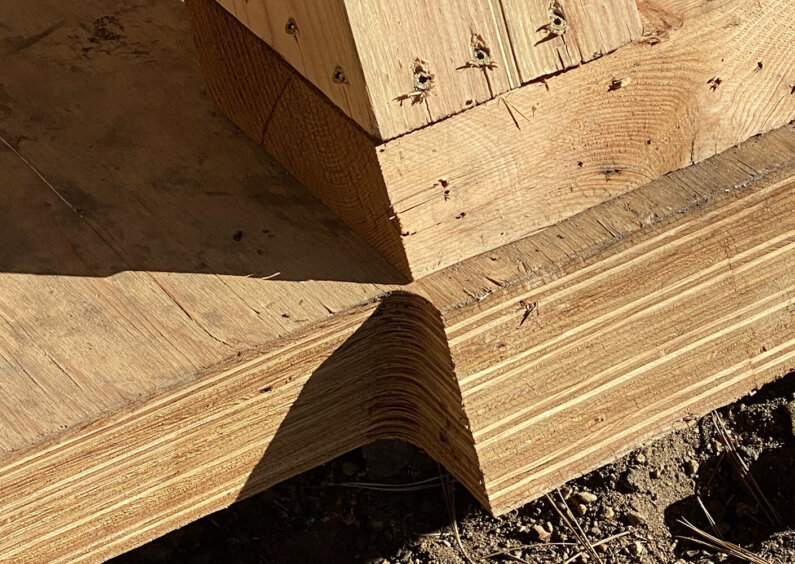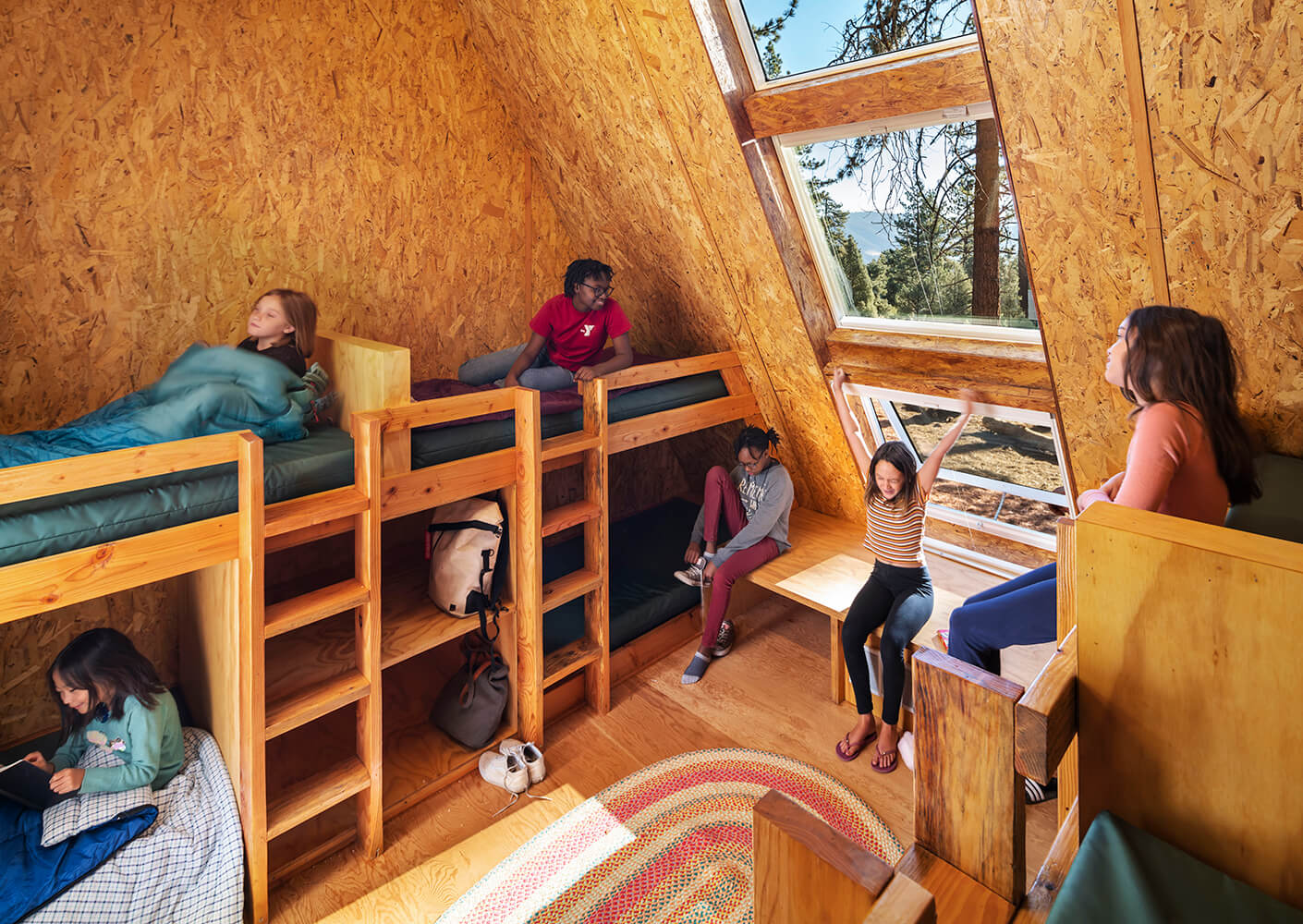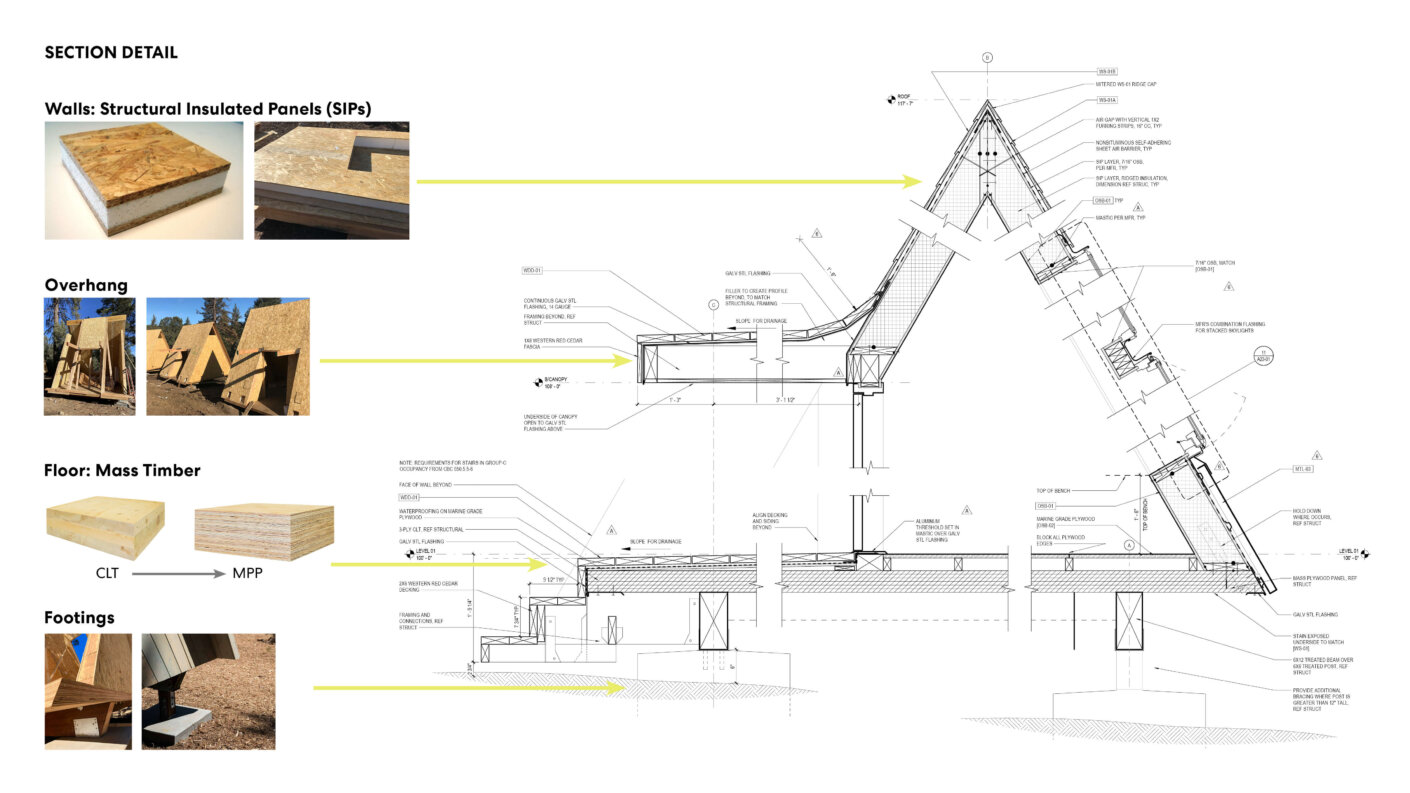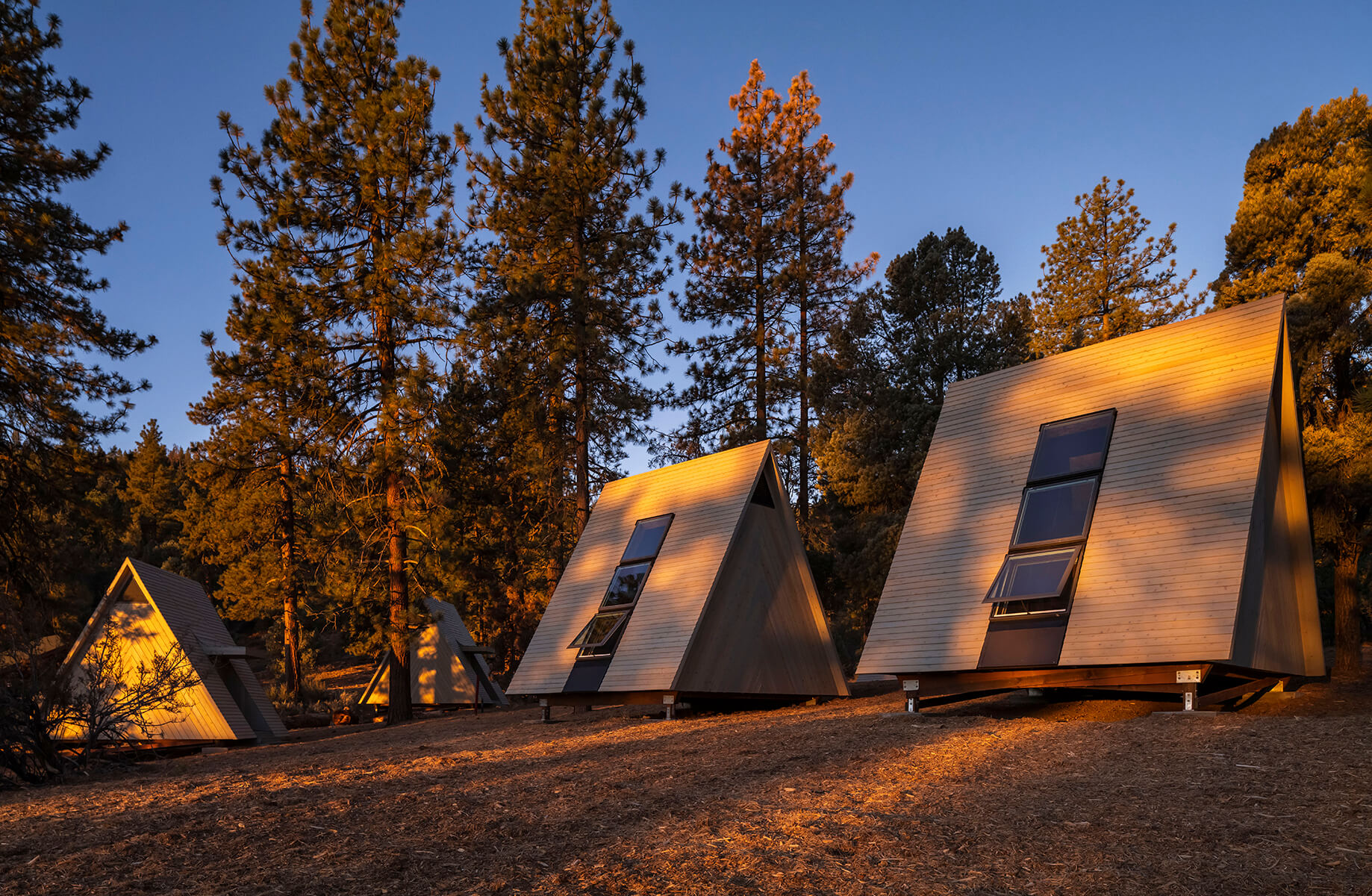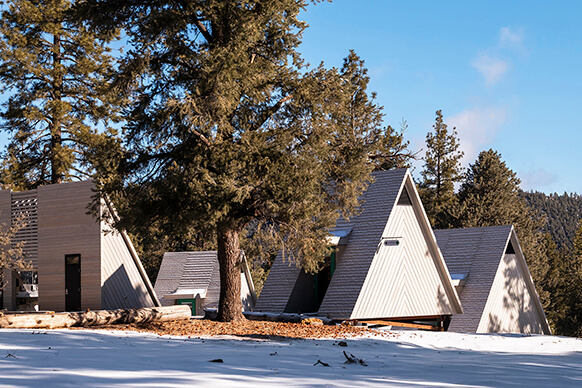By Ashley Stoner and Nathan Mattson, a Project Architect in our Los Angeles studio
Each year, Perkins&Will studios across the globe compete to identify and celebrate the best in technical design. The Transcendent Detail Competition challenges project teams firmwide to put forth their most technically compelling built work to be judged on four criteria: creativity, elegance, technical difficulty, and adherence to design intent. The 2021 champion, the Camp Lakota sleeping cabin, achieved excellence in all four criteria. Through iterative system evaluations, a sophisticated approach to rustic design, and an appreciation of the site’s natural beauty, the Camp Lakota team produced an elegant, efficient, and cost-effective solution.
The Girl Scouts of Greater Los Angeles (GSGLA) identified Camp Lakota, located in the mountains just north of Los Angeles, as the premier year-round camp to serve its 44,000 members. The GSGLA engaged our firm to reimagine the camp and transform it into a place that attracts and inspires Girl Scout campers of all ages—and comforts their parents as their children head off on their first sleep-away adventure.
The project consists of six village clusters and a central dining hall serving all campers. Each village cluster contains a restroom/shower building and either tent camping or six newly built cabins. The team’s challenge included designing to a tight budget, addressing wildfire risk, respecting the natural environment, and enriching the girls’ camp experience. Ultimately, creating “rustic comfort” by doing more with less and using a “light touch” became the mantra guiding the team in making design decisions. The winning transcendent detail was the sleeping cabin design.
